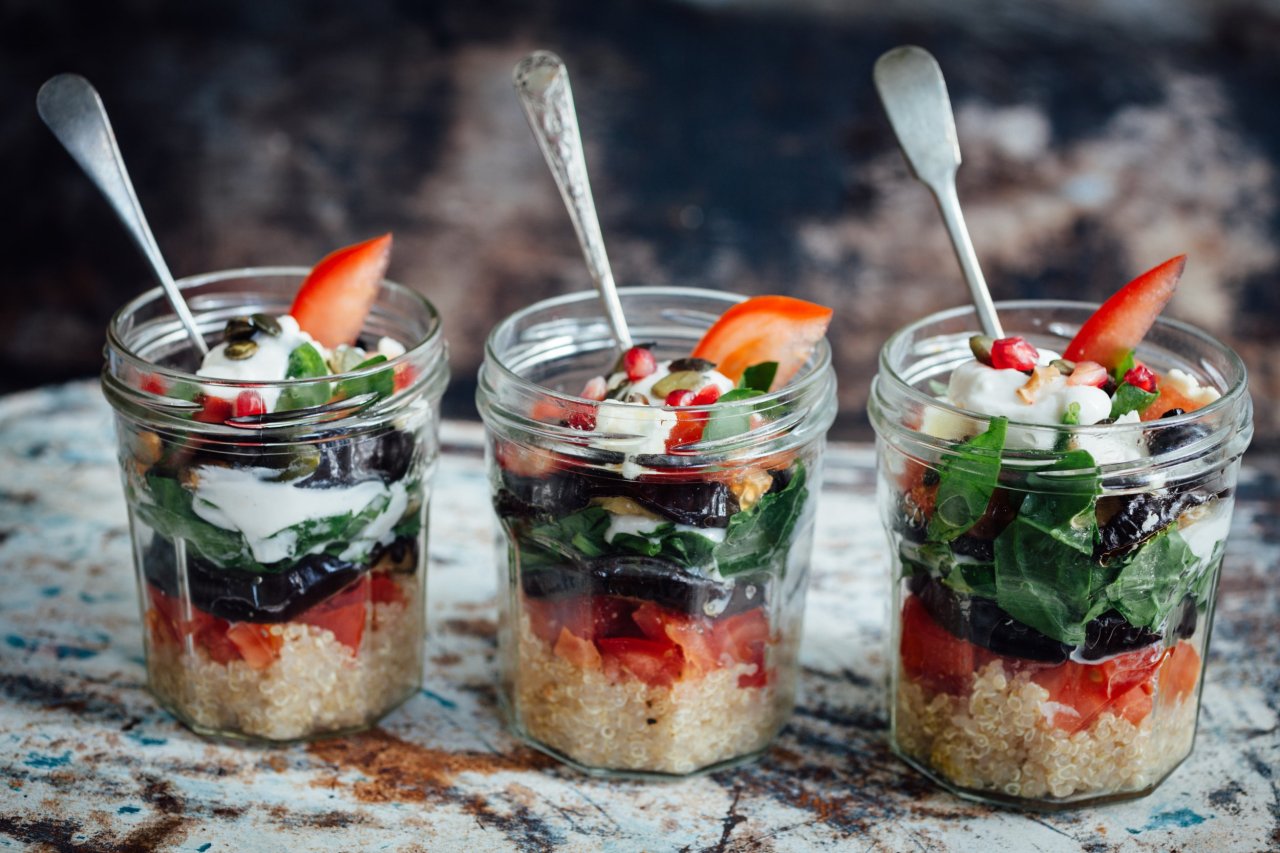Updated | Two years ago, Boston dietitian Kate Scarlata proudly stood before a roomful of colleagues at a conference sponsored by the New England Dairy Council and announced her professional goal was "to make talking about IBS more sexy." Everyone laughed.
Now the council may wish it had taken her mission a little more seriously. Scarlata has helped hundreds of people who have suffered for years, sometimes decades, with chronic and debilitating symptoms that include diarrhea, constipation, bloating, gas and excessive abdominal pain. Usually, but not all the time, a physician diagnoses her clients with irritable bowel syndrome (IBS) or another type of functional gastrointestinal disorder. Many tell her about enduring years of pain, embarrassment and unhelpful doctors' visits. Scarlata wants to change that. "Discussions about digestive problems are generally taboo," she says. "Ironically, when I am at a social gathering and openly talk about what I do for a living, everyone near me seems to lean in and asks questions. Interest in gut health is at an all-time high."
What Scarlata usually ends up discussing with strangers, friends and clients is fermentable oligosaccharides, disaccharides, monosaccharides and polyols (FODMAPs), short-chain carbohydrates that are poorly absorbed by the small intestines. An increasing body of research shows that these food molecules trigger symptoms of IBS and some other digestive disorders—the malabsorption drags water into the intestines, which causes bloating. Because these food molecules are not properly absorbed, they end up in the large intestines, where bacteria that live in the gut feed on them and then produce gas byproducts, namely hydrogen and methane. This whole mess causes the intestines to distend, and the nerves in the intestinal walls send pain signals to the brain. Symptoms of this crippling condition can be intermittent or chronic. However, a diet low in FODMAPs appears to alleviate many of these problems.
Scarlata is one of countless dieticians and physicians who have seen remarkable changes when a person with GI symptoms eschews the hundreds of seemingly healthful foods high in FODMAPs. Many of these items are what physicians have, for years, recommended people with balky bowels eat, such as apples, yogurt, nuts, whole wheat and low-fat dairy.
A growing number of studies, including a recent one conducted in the U.S. and published by researchers at the University of Michigan Health System in Gastroenterology, found a low-FODMAP diet provided relief from IBS-related abdominal pain in more than 50 percent of patients. Over the course of six weeks, 61 percent of the IBS patients reported an overall improvement in quality of life.
With 20 percent of the U.S. population suffering from IBS, it's not surprising that corporate food giants are pouncing on this burgeoning food trend. What was once a secret weapon of gastroenterologists and IBS sufferers is becoming the next healthy diet craze. It makes sense that experts would place so much emphasis on dietary changes, since there are only a few prescription medications for IBS, and they are effective for only about 30 percent of patients.
Nestlé Health Science, a division of Nestlé SA, makes products that address specific dietary needs, such as Boost, a drink containing protein, vitamins and minerals. It's chiefly for people 50 and older who have trouble eating and digesting solid foods. Scarlata recently consulted with Nestlé Health Science when it was looking to develop a suitable meal-replacement drink for consumers suffering from GI distress. In October, the company unveiled ProNourish, the first of several low-FODMAP food products it plans to create.
Nestlé is positioning ProNourish as a solution for people with "digestive sensitivity," says Barb McCartney, regional business head for Nestlé Health Science consumer care business in North America. Scarlata says her clients are desperate for products such as ProNourish, especially when they're beginning the diet and feel overwhelmed at the prospect of reading countless food labels to check for those short-chain carbs, which are in nearly every commercially produced food.
A low-FODMAP diet entails avoiding foods in all of the four categories that make up the acronym: Oligosaccharides, a subtype that include fructans (found in wheat, rye, garlic and onion) and galacto-oligosaccharides (legumes and some nuts, particularly pistachios and cashews); disaccharides, found in carbohydrate that forms when two sugar molecules join together (lactose in milk is commonly malabsorbed and is therefore a FODMAP source); monosaccharides in fructose (when in excess of glucose in a food), found in honey, mango, apples and watermelon; and polyols, which are sugar-free sweeteners, also known as sugar alcohols, that include sorbitol, mannitol, maltitol, xylitol and isomalt.
That doesn't seem to leave many meal options, especially when eating out. In Australia, where a team of researchers at Monash University in Melbourne developed the diet in 2006, there are low-FODMAP cafés. But the U.S. is only just now starting to embrace this restrictive meal plan.
The diet is challenging, even if you live Down Under, so strict adherence is typically only temporary. Dieticians like Scarlata and physicians such as Dr. Caterina Oneto, a gastroenterologist at Concorde Medical Group and faculty member at NYU Langone Medical Center, use the diet to help patients determine which FODMAPs their digestive system is unable to tolerate. In the beginning, the dieter has to avoid all foods on the list. (This is such a difficult and complicated task that there are dozens of phone apps to guide grocery shopping and meal decision for anyone on the plan.) After a few weeks of this "elimination diet," physicians and dieticians may start food challenges. They'll introduce foods from each of the six categories, one at a time. This provides information on whether a patient's symptoms are triggered by, say, the oligosaccharides in onions or the compounds in artificial sweeteners.
"What you want to achieve ideally in a patient with IBS is initial improvement by restricting the diet," says Oneto, "but after that, you should do food tests to liberalize the diet as much as possible." In the end, the hope is that IBS sufferers won't feel completely deprived.
Deep Into the GI's GI Tract
Anyone who loves scatological humor will find plenty to chuckle about with IBS. But for the millions of people doubled over in pain—a $10 billion annual burden on the U.S. health care system—the condition definitely isn't funny. Plenty of celebrities would agree. Jenny McCarthy once told Howard Stern about suffering from bouts of diarrhea, Tyra Banks complained to Janet Jackson of excessive gassiness, and Kurt Cobain sang about his IBS-related anemia and drinking pennyroyal tea "to distill the life that's inside of me." He's not the only musician to address digestive misery in song lyrics. About a decade ago, the GI condition also inspired a rap song by Cam'ron, aptly titled "IBS." ("I got stomach pain, don't matter sun or rain/Thought that it went away, uh oh, here it come again.")
A survey of 3,200 IBS patients in 2015 by the American Gastroenterological Association found they missed, on average, two days of work or school each month due to symptoms and reported at least nine days a month in which their condition affected productivity. Many in the survey said they would willingly give up other enjoyable or essential things in their life for a month if it meant relief from IBS symptoms—nearly half were willing to live without the internet, 40 percent said they'd skip sex, and 55 percent would stop consuming caffeine in return for less time on the toilet. Many reported their condition causes embarrassment and shame, and over one-third said they avoid situations where a bathroom may not be accessible.
IBS sufferers also complain that their symptoms aren't taken seriously, even by physicians. That's partly because it's a diagnosis of exclusion, settled on as the only answer when a patient doesn't have other conditions that could explain the cause of their symptoms. For years, many people placed IBS in a category of psychosomatic conditions that churned a lot of profit for the pharmaceutical industry.

The condition was first recognized in the 19th century by William Osler, a Canadian physician and founder of Johns Hopkins University. He observed a common set of symptoms in women with psychiatric problems, and IBS was thought to be caused by psychological distress, a canard that survived well into the late 1970s. It wasn't until the 1990s that a group of gastroenterologists formulated criteria to help physicians diagnose IBS, known as the Rome I and Rome II, that focused solely on the physical manifestations of the illness. New research has continued to reinforce that IBS isn't all in the mind.
A study published in January in the American Journal of Gastroenterology analyzed data collected on active-duty members who took part in the Millennium Cohort Study, an ongoing project to track and evaluate the long-term health effects of military service. It's been recognized for some time that functional GI disorders are common in military personnel, so the researchers wanted to see if that was due to distress caused by experiencing war firsthand. It turned trauma wasn't necessarily the leading factor. Instead the common threat appeared to be a health history of infectious gastroenteritis (the stomach bug).
This study cleverly points out what GI specialists and researchers are now suggesting: IBS emerges, in part, because of an imbalance of a person's microbiome, the ecosystem of "good" bacteria in the gut and elsewhere. When that delicate balance is thrown out of whack because of illness or the wrong food choices, IBS and food sensitivities may emerge. "A lot IBS is post-infectious phenomenon because the microbiome shifts and changes," says Oneto.
Pro and Con Probiotics
Most people don't want to talk about poop—especially in relation to what they eat. Food companies are well aware of this, so they've traditionally shied away from reminding consumers that it all must eventually come out the other end. Still, advertisers have attempted to introduce consumers to evidence-based concepts in digestive health. Some of these efforts have been unsuccessful—and inaccurate.
In 2007, Dannon put actress Jamie Lee Curtis on television to promote Activia, a new yogurt guaranteed to improve bathroom regularity because it contained beneficial bacteria known as probiotics—and she enthused about its great taste too. The ad campaign made some stomachs turn, evident by a memorable Saturday Night Live sketch in which Curtis, played by Kristen Wiig, informs her commercial director that she's lost control of her bowels after OD'ing on the yogurt. (The Federal Trade Commission later sued the company for its exaggerated claims and forced it to stop talking about human plumbing in its advertising campaigns.)
However, Activia helped start a public conversation about the microbiome, and the food and supplement industry ate it up. Yogurt and kombucha were among the first popular probiotic foods, and consumers are now obsessed with maintaining a well-balanced gut, and this has grown into a multibillion-dollar industry. Companies are adding probiotics to all kinds of products, including cereal, cookies and candy. Legally, they can't claim that eating probiotic granola will alter your gut, but the buzzword is enough to convince many consumers that food is healthy, even if it's not.
The same can be said about a once little-known protein that naturally occurs in grains and can destroy the digestive system of only about 1 percent of the world's population. Years ago, gastroenterologists and patients with celiac disease—a digestive autoimmune disorder that causes damage in the small intestine—were the only ones who knew eating bread could bring misery. Eventually, the food industry caught on and managed to position gluten-free as simply a healthier way to eat, even though gluten is well tolerated by a majority of the population, according to most experts. That doesn't seem to matter much to the estimated 1.8 million people in the U.S. on gluten-free diets who were never diagnosed with celiac disease.
The explosion of the gluten-free market is partly due to self-diagnosis, a phenomenon that also will likely drive the sales of low-FODMAP products, says Christine Couvelier, president of Culinary Concierge, a company that tracks global food trends. She predicts the low-FODMAP diet will develop broad appeal as more of these products are introduced into the marketplace. IBS patients on the diet will want them, and there will always be people struggling with GI problems who spend time on the internet and then wonder if the diet might help.
The challenge, Couvelier says, will be for companies to translate the complex details of the diet into something that is easy to understand. Most people are impatient when shopping at grocery stores, especially when they have specific dietary needs. That means advertisers will need to work hard to convince consumers that FODMAP is just another way of saying "healthy." "If the food tastes great," Couvelier says, "then consumers will not feel they're being deprived."
Updated: This story has been updated to clarify the foods that constitute each of the high FODMAP food categories.



















